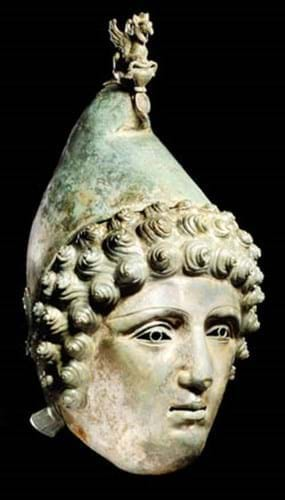
Currently only items that are at least 300 years old and made substantially of gold or silver, or which are found with artefacts of precious metals, can be declared ‘treasure’ – and thus offered to a museum for first refusal.
Under the new plans, that definition would be widened to include anything with a value over £10,000. A public consultation is now open on the plans and runs until 30 April.
It follows the case of the Crosby Garrett Roman parade helmet found in 2010. As it was made of copper alloy, it could be sold by the finder at auction – selling at Christie’s to a private collector for £1.9m.
Heritage Minister Michael Ellis announced the proposals to make it easier for important artefacts to be acquired by museums.
There are currently no sanctions on someone who knowingly buys an unreported find and the growth in online markets has given opportunistic finders an outlet to sell unreported finds under the radar. The changes will also mean that the duty to report treasure will be extended to those acquiring it.
The measures would be the first major changes since the Treasure Act came into effect more than 20 years ago.
Heritage Minister Michael Ellis said: “The search for buried treasure has captivated people’s imagination for centuries. And in recent years the number of finds has continued to increase. However some outstanding artefacts of great archaeological and cultural importance have been lost to private sellers simply because they do not meet the current criteria for treasure.
“These new proposals will help our museums acquire these treasures and make it harder for nationally important finds to be sold for personal profit.”
“Record-breaking year for treasure finds”
He said more items than ever are being discovered by treasure seekers with the number of finds increasing by over 1500% since 1996.
The latest figures show that 2017 was a record-breaking year for treasure finds with a total of 1,267 items unearthed, including ancient Roman statues, Bronze Age rings and a Stuart pocket watch.
In the last 20 years, 13,000 finds have gone through the treasure process. Of these, over 30% are now in museums and can be enjoyed by millions of people each year.
This Roman parade helmet that sold at Christie’s in 2010 has been loaned out a number of times to museums for the public to view it.





